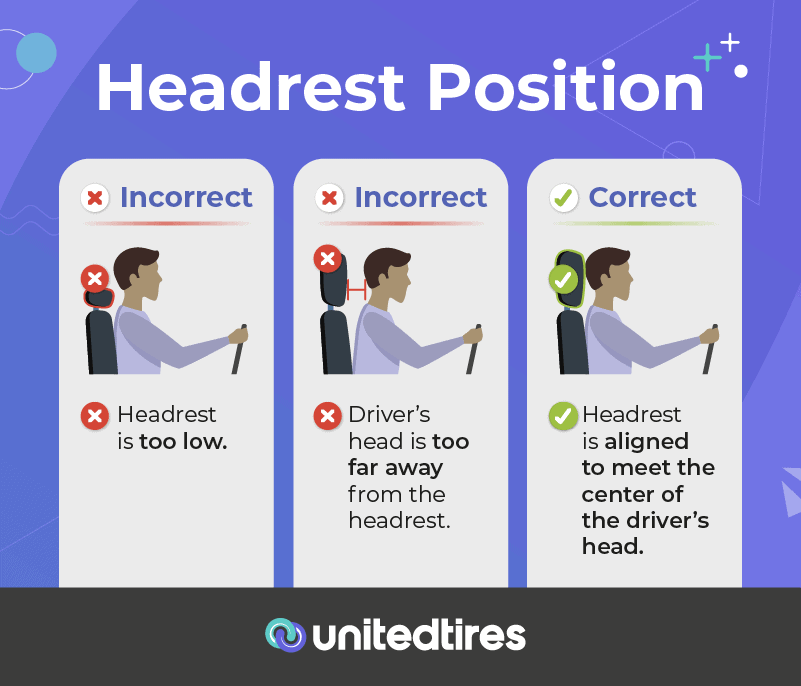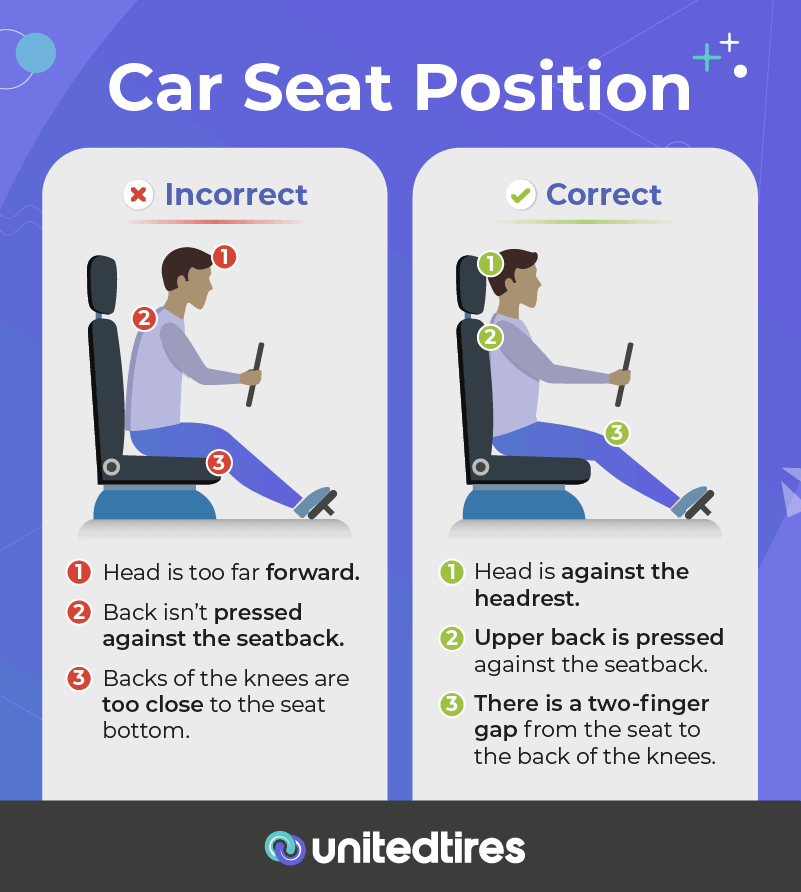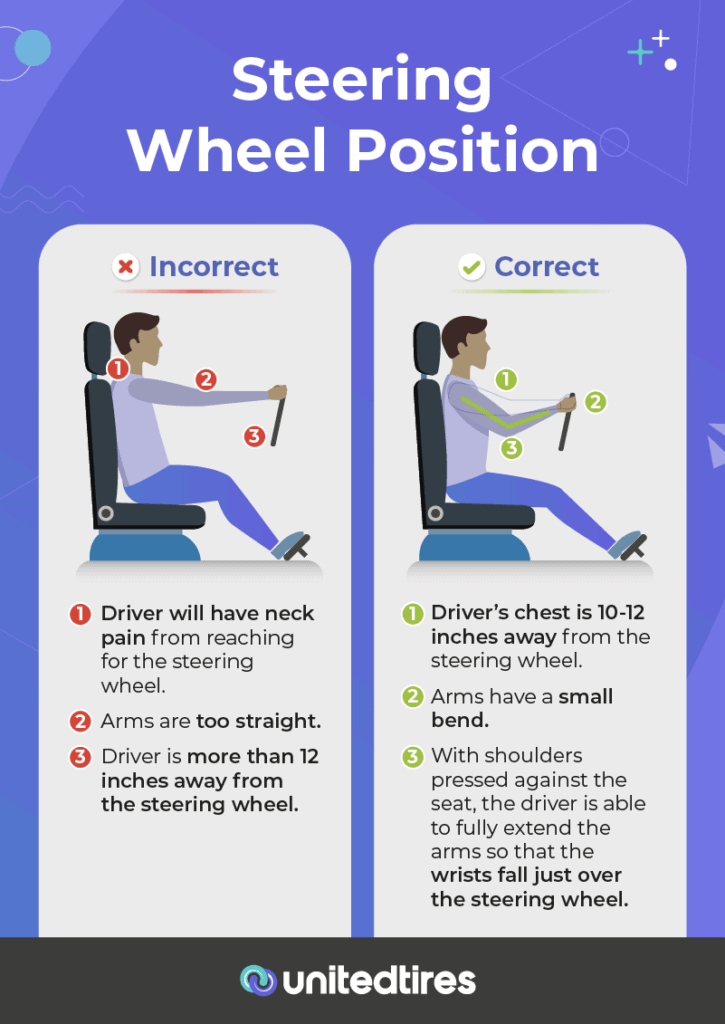Whether for work or pleasure, many of us spend a lot of time on the road. After enough hours behind the wheel, even the most diehard driver might start experiencing some aches and pains. For many, however, some driving posture adjustments can relieve muscle fatigue and discomfort.
Sitting for a prolonged time can lead to pain and stiffness. With some safe stretches and seat adjustments, though, drivers might enjoy the open road even more. Thus, here are four ways to stretch and improve driving posture while on the road.
1. Back Support
Your back and core support a good portion of your body. Improper seat positioning can therefore lead to undue stress and strain on the back. This can turn a drive into an excruciating outing.
Don’t let your back take that pain. Adjust the seat to keep your back happy.
Setting the Seat
Anytime a new driver enters the vehicle, adjust the seat and mirrors for safe driving. This is a great way to highlight the importance of pre-driving safety for children in the car. Highlight the following important seat positioning tips:
- Keep your upper back against the seatback.
- Your back should stay at an angle of 100 to 110 degrees.
- The seat should be two inches from the backs of your legs.
The seat should be far enough away from the steering wheel for plenty of legroom but not too far to cause stress and pain in your arms. An upright seatback is essential to keeping your back relaxed, and these seat positions will keep your body in the safest position.
Back Stretches
The best back stretches for a driver will increase blood flow within the back muscles. Some stretches a driver can do on the road; others require a parked car.
If you need to relieve some pain while driving, try this stretch. Arch your back against the seatback, and hold it for 5-10 seconds. Press your back against the seat as you let the arch go. Repeat this a few times until your back feels loose, and the tension has left.
Once you park, consider some more dynamic stretches, including waist twists and toe touches. These will engage multiple muscle groups and help your entire body loosen up from the road stiffness.
2. Arms and Shoulders
After enough time holding the wheel, arms and shoulders can feel the stress and effort of driving a vehicle. Driving with pain can distract you from the road, and distracted drivers are dangers to themselves and other drivers.
Steering Wheel Positioning
Avoiding arm and shoulder pain while driving starts with the steering wheel’s position. Once the seat is set for optimum back support, the steering wheel is next. To begin:
- Adjust the steering wheel to be a foot away from your chest.
- Sitting correctly, your wrists should rest on the top of the steering wheel.
- Your arms should sit at an angle of 120 degrees when holding the wheel.
- Hold the steering wheel with your hands at the 9 and 3 positions.
Holding the steering wheel should feel natural and cause no pain in your arms or shoulders. Reaching too high or too far to hold the wheel will cause undue stress and pain. As well, holding the steering wheel at a lower position allows you to use your armrests while driving, and that can save your arms and shoulders from pain.
Stretching the Arms and Shoulders
Stretching your arms and shoulders is straightforward while on the road or at rest. The driver and passengers can do these stretches to stay pain-free while in the vehicle.
Shoulder shrugs can help reduce neck and shoulder strain from long drives. Simply shrug your shoulders and hold the position for five seconds. Repeat five times, or until your shoulders are loose and without pain.
Passengers have more freedom while the car is moving. One stretch for passengers is the backward arm stretch. For this exercise, lean forward, and stretch both arms behind you. Shrug your shoulders back as you clasp your hands together. This will improve blood flow and alleviate pain across your upper body.
3. The All-Important Neck

Neck fatigue can severely impair one’s ability to drive. From stiffness to pain, a sore neck can impede you as you check your mirrors and blind spots. Avoid a stiff neck with proper headrest positioning and some simple stretches.
Headrest and Seat Positioning
Proper headrest positioning is vital for more than reducing neck fatigue. It can also save you in a collision from the rear. Your head should never be more than four inches from the headrest to avoid whiplash injuries.
The headrest must also be high enough to avoid causing extra injury. If it is too low, it offers little support, and it can crash into the base of the skull in a collision. Ensure the center of your head contacts the headrest when you lean back.
Neck Stretches to Keep You Going
Like arm stretches, drivers can stretch their necks while on the road. A simple neck stretch alleviates pain and stiffness, and it is as simple as three steps:
- Tilt your head to the right until your right ear touches your shoulder.
- Hold the position for 5-10 seconds.
- Slowly release and tilt to the other side, repeating the process.
Once you’re stopped, you can add extra movements. Try turning your entire head to one side and then the other. Bring your chin to your chest, and hold for 10 seconds. Slowly look back and up to the sky, repeating until the stiffness is gone.
4. Don’t Forget Your Legs
Even though you’re seated while you drive, your hips and legs will still bear a lot of stress. Sitting for long periods can cause blood to pool and swell against your veins. This will cause discomfort and will lead to pain if not addressed.
Seat Positions to Avoid Leg Pain
Adjusting the seat for optimum back and shoulder support should also take care of your legs. However, there are a few specific adjustments to ensure your legs stay fresh:
- Keep the seat flat, as too much of an incline or decline will cause stress on the hips and knees.
- Allow plenty of legroom, but not too much that you struggle to reach the pedals.
- Raise the seat height until you can reach the pedals with a slight bend in your knees.
These adjustments attempt to keep the body as safe and comfortable as possible. Sometimes, though, you may just need to find a rest area and stretch out those legs.
Stretches for the Entire Leg
Most leg stretches can only be safely done in a parked car. Even if you use cruise control, stretching your legs while driving could accidentally press one of the pedals. Therefore, leg stretches should only take place in a safe area.
Hip stretches can help keep your legs and back ready to continue driving. While sitting, cross one leg over the other, ankle on top of the knee. Next, lean forward, apply a slight twist if preferred, and hold for 5 seconds. This will loosen up your hips and lower back, thus relieving tension and pain.
Stiff ankles are no match for ankle twists. Rotate each foot clockwise five to ten times with your toe pointing forward. Repeat counterclockwise for each foot.
Lastly, don’t forget to take a walk. A quick walk every time you take a break will keep your blood flowing and your mind clear.
Final Thoughts
Driving pains can be as annoying as they are dangerous. Always adjust your seat for comfort and safety. The driver’s seat should feel natural and protective after adjusting the seat, headrest, and steering wheel.
Even with perfect seat settings and driving posture, however, stiffness and soreness can occur. If you spend hours behind the wheel, use these stretches to keep you pain-free and safe. Though you can do some of these stretches while driving, always err on the side of caution. Pull over if you need, or find a rest area. Take a brief walk after stretching, and return rejuvenated and ready to drive.
This article was written by Rachel Perez, Outreach Associate, written on behalf of United Tires.



